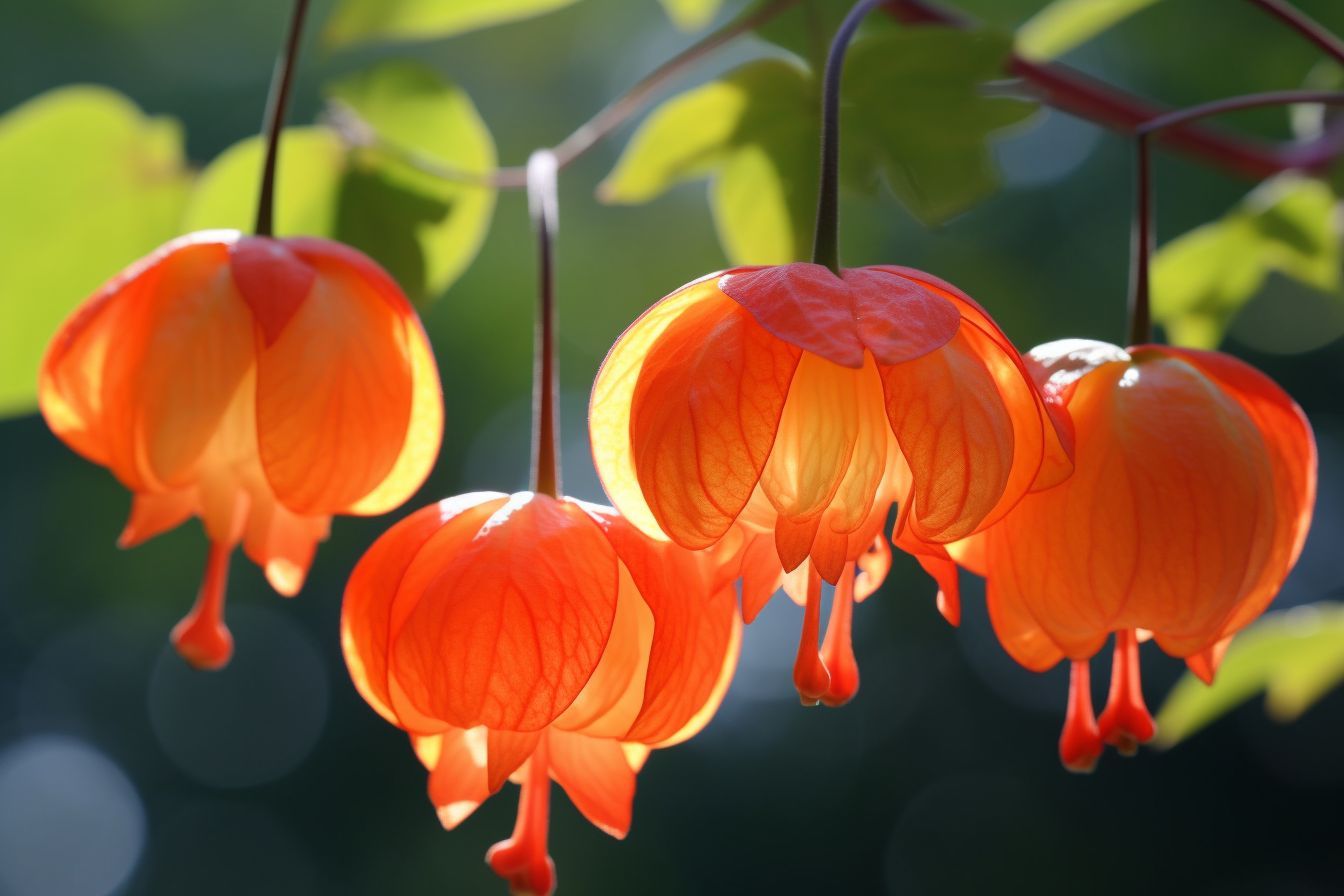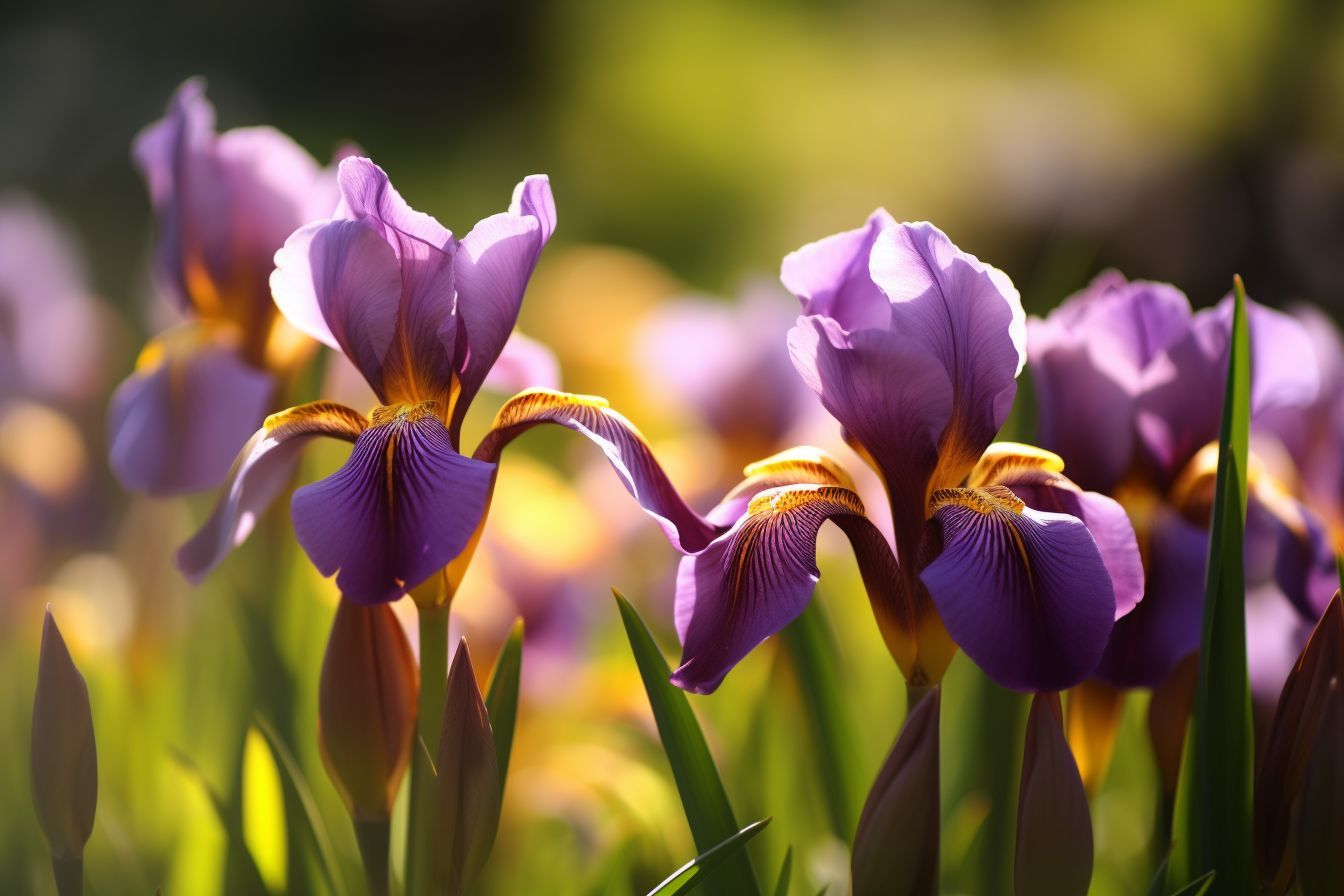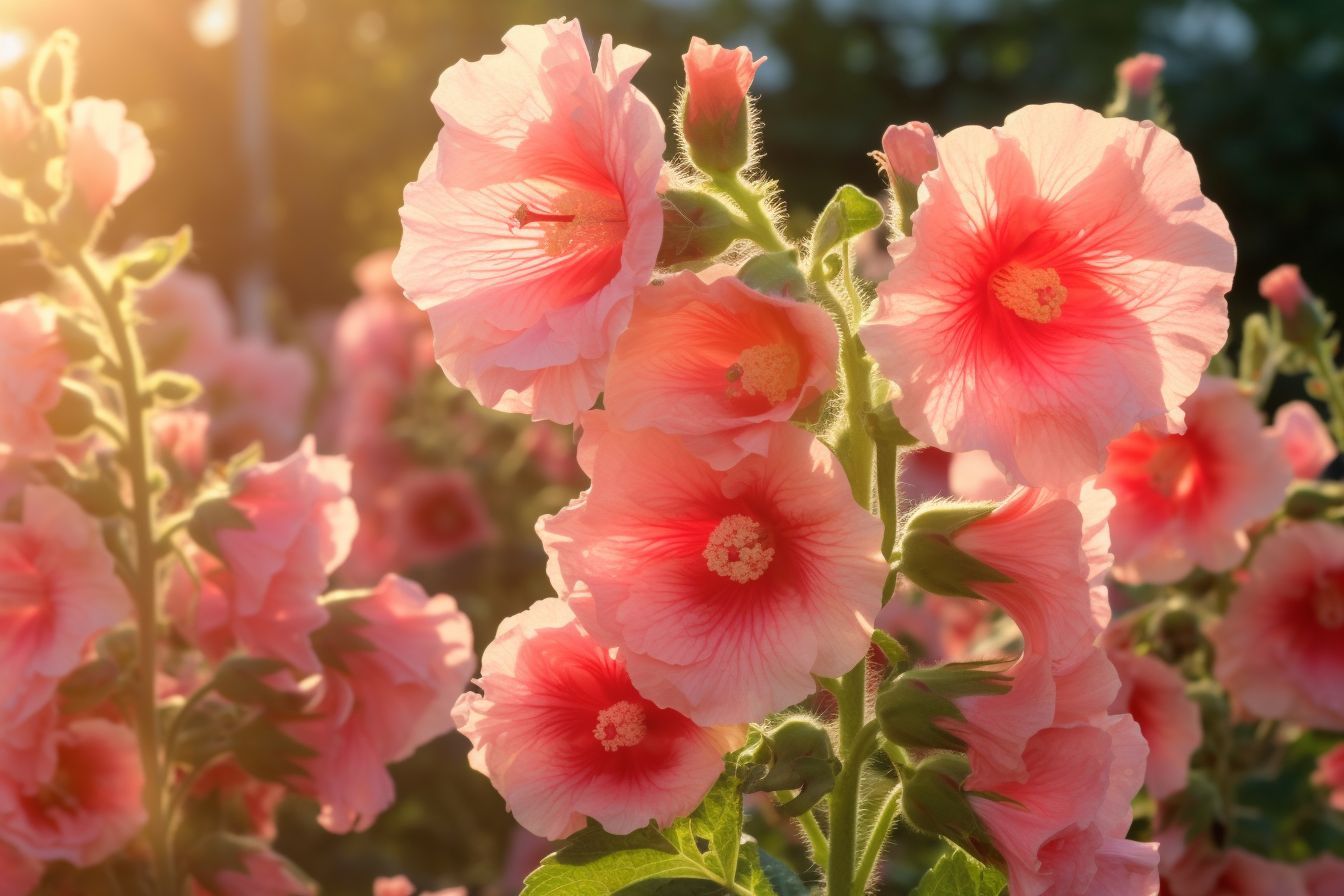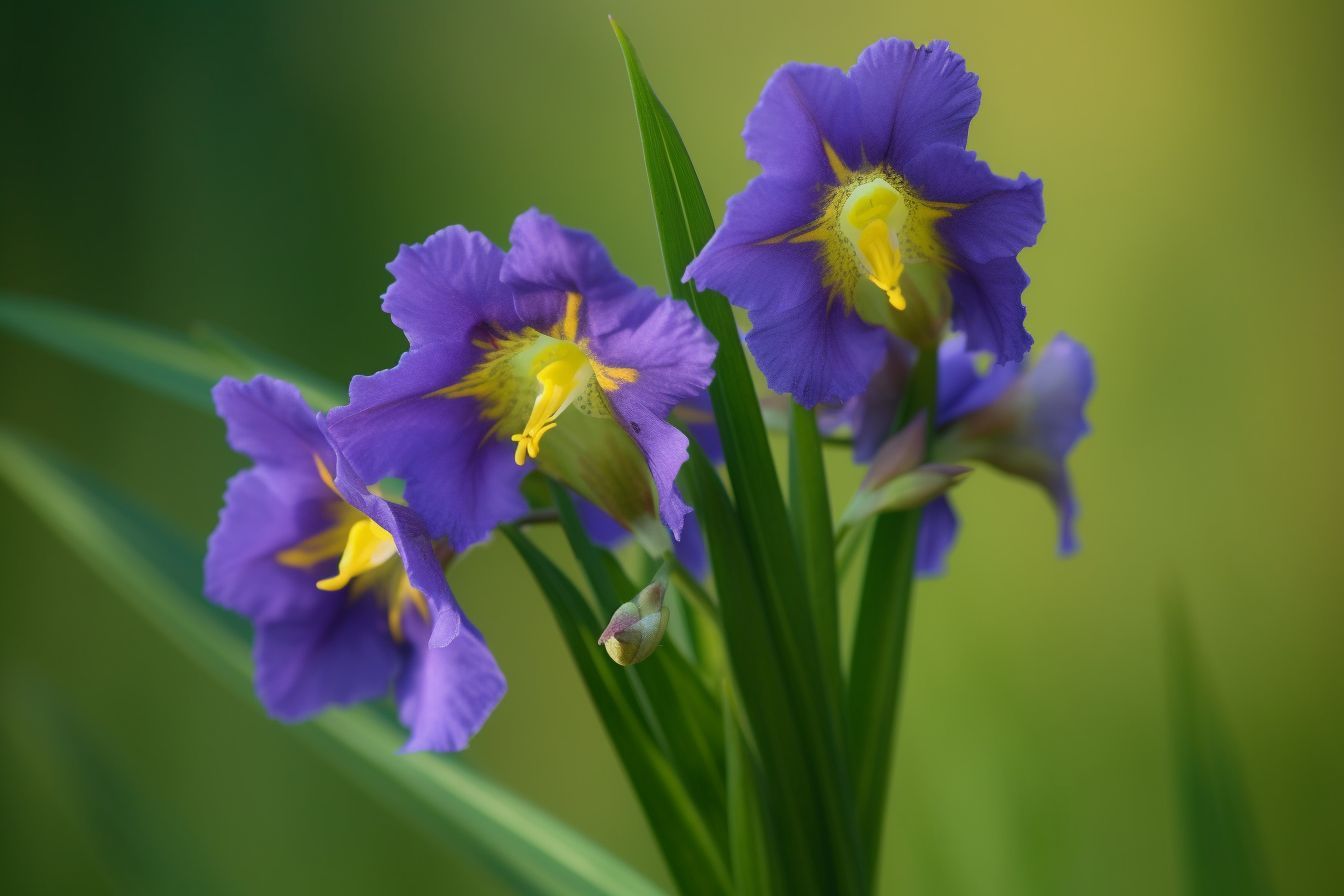Patience is a virtue that we all wish to possess, but it can be difficult to maintain, especially during challenging times. Luckily, nature has provided us with a plethora of flowers that symbolize and embody patience.
In this article, we’ll explore 10 of these beautiful flowers and how they represent this important virtue.
Whether you’re looking for inspiration to help you cultivate more patience in your own life or simply appreciate the beauty of these blooms, you’re sure to find something of interest here. So let’s dive in!
Lily

Lilies are beautiful flowers that come in many different colors and are often associated with purity, innocence, and renewal.
However, they also represent patience, particularly in the context of spiritual growth and development. This is because lilies have long been associated with the Virgin Mary and other religious figures, who are often depicted holding or surrounded by lilies.
In addition to their religious significance, lilies are also admired for their slow and steady growth. It can take years for a lily bulb to produce a fully bloomed flower, requiring patience and dedication to cultivate.
This makes lilies an apt symbol for the virtue of patience, which is all about taking the time to grow and develop over time.
Moreover, lilies have been used in traditional medicine to treat a range of ailments, from headaches to fevers, indicating that they possess healing properties that require time and patience to fully take effect.
Overall, lilies are a beautiful and meaningful flower that represent the virtue of patience in many different contexts.
Chinese Lantern

Chinese lantern, also known as Physalis alkekengi, is a unique flower that represents patience due to its slow but steady growth process. This plant takes time to produce its small, papery lanterns, which are used to protect the developing fruit inside.
The lanterns start off as green buds, gradually turning into a bright orange-red as they mature. This slow transformation is a reflection of the patience required in the growth process, reminding us that good things come to those who wait.
The Chinese lantern also symbolizes the importance of taking a patient approach to life. Its delicate blooms teach us that sometimes the most beautiful things take time to come to fruition.
The plant’s vibrant lanterns are often used in fall decorations, reminding us of the need to be patient as we move into the slower, more reflective months of the year. In many cultures, the Chinese lantern is also seen as a symbol of good luck and prosperity, reinforcing the idea that patience is a virtue that can bring great rewards.
Coneflower

Coneflower, also known as Echinacea, is a flowering plant that is native to North America. It has long been used in traditional medicine to boost the immune system and fight infections. Coneflower is also known for its symbolism of patience.
The coneflower plant takes time to grow, and it requires a lot of patience and care to thrive. The plant starts as a seed, and it takes several weeks for the seeds to germinate.
Once the seedlings emerge, they need to be carefully tended to for several more weeks until they are strong enough to be transplanted.
Even after the coneflower plant is transplanted, it can take several months for it to grow and produce flowers. The flowers themselves take time to mature and bloom, and they are known for their long-lasting beauty.
Coneflower’s symbolism of patience comes from the fact that it takes time and care to grow and thrive.
It reminds us that good things come to those who wait and that sometimes we need to be patient and trust the process. Coneflower encourages us to take our time, be patient, and enjoy the journey.
Snowdrop

Snowdrops (Galanthus) are delicate white flowers that typically bloom in late winter or early spring, often before the last snowfall of the season. They are native to Europe and Asia but are now grown around the world.
Snowdrops are known to represent hope and purity, but they are also associated with patience. This is because snowdrops are one of the first flowers to bloom after the winter season.
They must endure the cold and harsh weather before they can emerge from the ground and bring a touch of beauty to the world. This quality of perseverance and the ability to withstand challenging conditions is why snowdrops are often associated with patience.
Furthermore, snowdrops have a slow growth rate and take several years to mature and bloom. This characteristic of slow but steady growth and development also embodies the virtue of patience.
Snowdrops remind us that good things come to those who wait, and that patience and persistence can help us achieve our goals in life.
Lavender

Lavender is a flowering plant known for its beautiful purple flowers and sweet fragrance. While it is often associated with calmness and relaxation, it is also a flower that represents patience.
In the language of flowers, lavender is said to represent devotion, grace, and calmness. Its delicate, sweet scent is believed to have a calming effect on the mind and body, helping to reduce stress and anxiety. This makes it a popular choice for aromatherapy and relaxation practices.
In addition to its calming properties, lavender is also a symbol of patience. The plant takes a long time to grow and develop its beautiful flowers, often taking up to two or three years to reach maturity. This slow growth process requires a lot of patience and care, making it a fitting representation of the virtue.
Furthermore, lavender is also known to have medicinal properties, with its essential oil used to treat various health conditions such as insomnia, anxiety, and headaches.
Its healing properties also reflect the idea of patience, as it may take time and patience to see the full benefits of using lavender for health purposes.
Overall, lavender is a beautiful flower that not only represents calmness and devotion but also patience. Its delicate beauty and soothing fragrance remind us to be patient and enjoy the slow growth and development process of life.
Jasmine

Jasmine is a fragrant flower that is often associated with patience. The delicate, white blooms of the jasmine plant release a sweet, intoxicating fragrance that has made it a popular flower in perfumes, teas, and aromatherapy products.
The plant is native to tropical regions and is often grown for its beauty and fragrance.
Jasmine has long been associated with patience and endurance, perhaps due to its slow growth and the fact that it takes time and care to cultivate.
In many cultures, jasmine symbolizes hope, purity, and grace under pressure. In traditional Chinese medicine, jasmine flowers are used to treat anxiety and insomnia, and the scent is believed to have a calming effect on the mind and body.
In addition to its symbolic associations with patience, jasmine is also associated with love and sensuality. In many cultures, jasmine flowers are given as gifts to signify affection and desire. The flower is often used in wedding ceremonies and other romantic occasions.
Overall, jasmine is a flower that represents patience and endurance, as well as love and sensuality. Its delicate beauty and sweet fragrance make it a popular choice for gardens, perfumes, and other products that aim to promote relaxation and a sense of well-being.
Iris

The iris is a flower that represents patience because it blooms in the late spring and early summer, taking its time to fully develop and reveal its beauty. The iris plant has a long, slender stem that supports its delicate petals, which are available in a variety of colors such as blue, purple, yellow, and white.
The blooming period of the iris flower can last for several weeks, during which time its petals slowly unfurl, revealing intricate patterns and designs that are both mesmerizing and awe-inspiring.
The patience required to grow and cultivate an iris plant is also a reason why it is associated with patience. It can take several years for an iris plant to mature and produce blooms, and during that time, it requires consistent care and attention from the gardener.
The iris plant requires regular watering, fertilization, and pruning, and if it is not properly cared for, it may fail to bloom or produce weak, underdeveloped flowers.
In addition to its physical characteristics, the iris is also a symbol of patience in various cultures and belief systems.
In Greek mythology, the iris was believed to be a symbol of communication between the gods and mortals, as well as a messenger of hope and good news. The iris was also associated with the goddess Iris, who was known for her speed and agility.
In Japan, the iris flower is seen as a symbol of strength and resilience, and it is often used in traditional art and poetry to represent the ability to endure difficult situations with patience and grace.
Overall, the iris flower represents patience through its slow and deliberate blooming process, the patience required to cultivate and care for it, and its symbolism in various cultures and traditions.
Hollyhock

Hollyhock, also known as Alcea, is a tall flowering plant with a long blooming season, typically found in shades of pink, red, white, and yellow. This beautiful flower is known to represent patience, making it an excellent gift for anyone going through a tough time or dealing with a challenging situation.
One reason why hollyhock represents patience is because of its long blooming period. The flowers can last for several weeks, and some varieties may even bloom throughout the summer months.
This characteristic of hollyhock symbolizes the importance of being patient and persistent in achieving our goals, even if they may take a long time to come to fruition.
Another reason why hollyhock represents patience is its ability to thrive in different growing conditions. Hollyhocks can grow in a variety of soil types and are resistant to pests and diseases, making them an excellent choice for gardeners who may not have the perfect growing conditions.
This resilience and adaptability reflect the importance of patience in facing challenges and adapting to changing circumstances.
Overall, hollyhock is a beautiful flower that represents patience and resilience, making it a perfect gift for someone who needs encouragement during a challenging time or a reminder to stay patient in the face of adversity.
Spiderwort

Spiderwort, also known as Tradescantia, is a genus of herbaceous perennial plants with over 70 species. They are native to the Americas and are commonly grown for their attractive flowers and foliage.
Spiderwort is a flower that represents patience due to its unique blooming pattern. The flowers bloom for only a day or two before wilting, but the plant produces new flowers continuously throughout the growing season.
This means that the plant requires a lot of patience from the gardener as they have to wait for each individual flower to bloom and enjoy its beauty for a brief moment.
Furthermore, spiderwort also requires patience in its care. They prefer consistently moist soil but not overly waterlogged, which can be a challenge for gardeners. They also need to be regularly deadheaded to encourage new blooms and prevent the plant from becoming too leggy.
In addition to its symbolic representation of patience, spiderwort has also been used for medicinal purposes by Native Americans.
The plant was used to treat various ailments such as eye infections, stomach cramps, and respiratory issues. Its roots were also used as a poultice for wounds and burns.
Overall, spiderwort is a flower that embodies the qualities of patience, perseverance, and resilience. Its delicate beauty and ability to continuously bloom despite its short-lived flowers serve as a reminder to be patient and appreciate the fleeting moments of life.
Cosmos

Cosmos is a beautiful flower that is native to Mexico and Central America, but can now be found in many parts of the world. It is a member of the daisy family and comes in a variety of colors including pink, white, and crimson. Cosmos is a flower that represents patience because it takes time to fully bloom and reach its potential.
The plant grows from a small seed into a long, slender stem with thin, feathery leaves. As it matures, it develops beautiful, daisy-like flowers that are delicate and intricate.
However, it can take up to three months for a cosmos plant to fully mature and produce flowers. This slow growth process requires patience and dedication from the gardener.
The cosmos flower also has a unique symbolism in different cultures. In Mexico, the flower is associated with the Aztec goddess Xochiquetzal, who represents love, beauty, and fertility.
The Aztecs believed that the cosmos flower had magical powers and would use it in religious ceremonies and as offerings to the gods.
In other cultures, the cosmos flower symbolizes peacefulness, harmony, and order. It is often used in meditation practices and can help bring a sense of calmness and serenity to the environment.
Overall, the cosmos flower is a great representation of patience because of its slow growth process and the dedication required to help it reach its full potential. Its unique symbolism in different cultures also adds to its significance as a flower of patience.

My name is Daniel Elrod, and I have been houseplant love ever since I was 17. I love how much joy they bring to any room in the home. I’ve always been amazed at how a few pots of flowing leaves can turn a drab and sterile office into an inviting place where people love to work at.
















